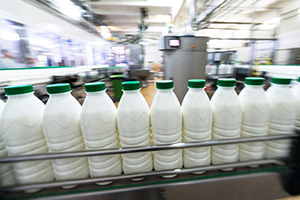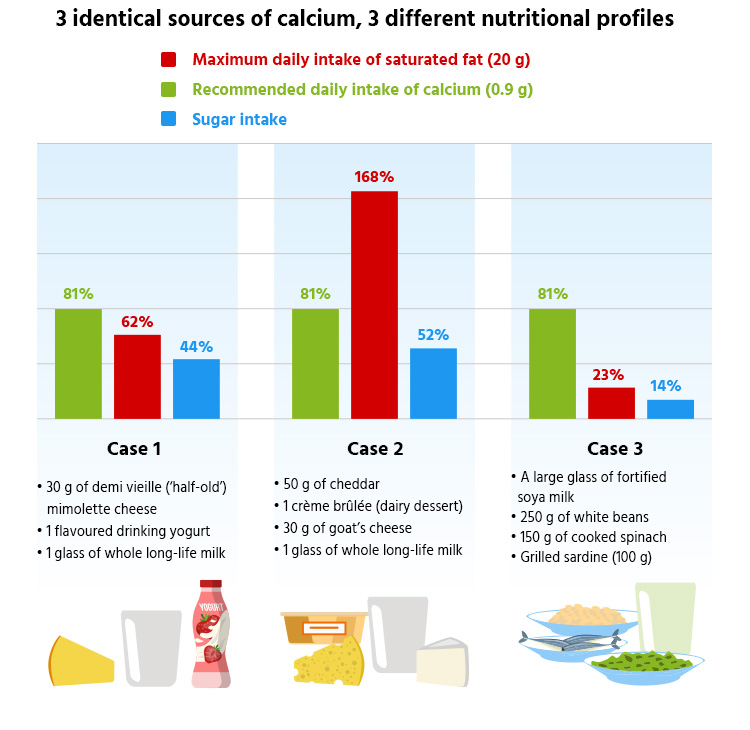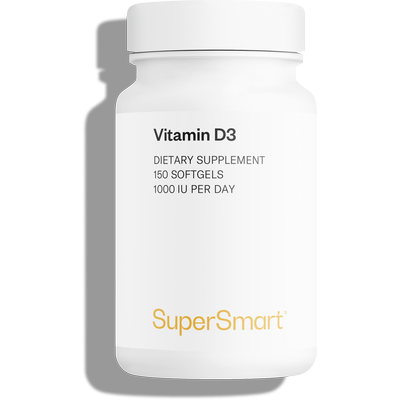Beware the dairy industry: new study reports 170 cases of lobbying
 Have you ever asked yourself how it is that unlike almost all other mammals, we humans have ended up incorporating milk into our diet? And do you increasingly find yourself wondering whether this is actually a good thing? Either way, one thing’s for sure: the dairy industry is doing everything in its power to convince you it is.
Have you ever asked yourself how it is that unlike almost all other mammals, we humans have ended up incorporating milk into our diet? And do you increasingly find yourself wondering whether this is actually a good thing? Either way, one thing’s for sure: the dairy industry is doing everything in its power to convince you it is.
Independent researchers regularly highlight the significant level of lobbying carried out in particular by the two dairy giants, Lactalis and Danone, and by CNIEL, the umbrella organization for the dairy industry (1). Such activities are designed to influence both consumer behaviour and European government policies. Their strategy? To make us believe that milk is essential for good health.
Yet while it may have been something of a blessing for our ancestors, it’s important not to be taken in by the hype: milk is far from essential and may even cause certain nutritional problems (read on for more details). The bottom line is that the 130 million tons of milk produced in Europe each year have to be disposed of somehow …
Dairy products did help some of our ancestors to survive
The history of milk really began around 10,000 years ago at a time when it was not consumed by humans beyond early childhood: post-weaning, humans, like other animals, were unable to digest milk. This meant that infants had a guaranteed source of nutrition, of no use to any other group, which therefore supported survival of the species.
But it was at this time too that, in a break from their nomadic tradition, a handful of humans decided to start domesticating animals. And with this new way of life, which they hoped would require less effort, the rules quickly changed: greater availability of food brought a sharp rise in the population. To meet the resulting increase in requirements, our ancestors needed to produce ever greater quantities of food and to exploit livestock products as much as possible.
They therefore had the idea of converting milk from animals, which they were unable to digest, into a much more digestible product: cheese. Though they obviously didn’t realise it, the reason they were able to consume this ‘new’ food was because it contained less lactose than milk. From about the age of five, we stop producing lactase, an enzyme which enables lactose to be divided into glucose and galactose – two sugars that are fully digestible. But the sharp growth in the population also resulted in wide genetic variability and it was soon apparent that certain people, as a result of random mutations, were able to drink milk beyond the age of five with no significant adverse effects(2-3).
In fact, these new ‘milk-tolerants’ continued to produce a small amount of lactase, and so were able to drink the milk of the animals they were rearing. This gave them a considerable nutritional advantage over their counterparts, especially during periods of famine! Gradually then, and because the ‘milk-tolerants’ had better survival rates, the mutation responsible for the tolerance spread, to the point where – as this map shows – it covered the whole of Europe:

Frequency of lactose tolerant in the world population
So it could be said that in some ways, milk consumption did benefit certain humans. It undoubtedly helped those who could digest it to survive famines better than those who couldn’t.
But as you can see from the map, there are corners of the planet where people are still unable to digest milk today. And they’re doing just fine! If you take a look at the ranking of countries in terms of healthy life expectancy, you’ll see Japan right at the top, a country whose inhabitants do not consume milk.
What’s the reason for this? In actual fact, it’s very simple: while the ability to digest milk provided a slight advantage when it came to surviving the major famines of history, the variety of foods available today is so wide that milk can no longer be classed as anything like essential. Yet the industry would have us believe the complete opposite with their expensive TV ads and aggressive campaigns.
But is dairy consumption compatible with a longer, disease-free lifespan?
Milk is a rich food, valuable in times of food scarcity, which has undoubtedly helped people survive better in hostile conditions. But in today’s world, where thousands of different foods are available, should it still be viewed in the same light? When the dairy industry recommends that we consume three to four dairy products a day, is this really compatible with living a long life in the best possible health?
There are all manner of reports about the possible links between dairy products and certain diseases. It’s an area which is still extremely unclear, due obviously to the actions of the lobbyists referred to in the study, but also to the fact that we still don’t understand the exact mechanisms involved in some of the diseases concerned (such as osteoporosis), nor can we explore with any accuracy the long-term impact of such a complex dietary variable.
But there are three factors that undeniably challenge this ‘3-4 dairy products a day’ recommendation.
1) Consuming three dairy products a day would, in the vast majority of cases, take you over the limit for saturated fat intake set by the WHO.
If you were to follow the dairy industry’s recommendation, it’s highly likely you’d exceed the WHO guideline for consumption for saturated fat, which is 20g a day. Especially if you also adopted another recommendation, this time from the French national programme for health and nutrition (PNNS), to eat one to two portions of meat a day. Saturated fats are fatty acids which are linked to an increased risk of cardiovascular disease(4), high levels of which are found in dairy products. The following three case studies speak for themselves:

2) Consuming three dairy products a day does not encourage calcium intake from diverse sources
One of the reasons why health authorities encourage us to drink milk is for its calcium content. A large glass of milk provides around 200mg of calcium, almost 25% of the daily amount recommended by the French Agency for Food, Environmental and Occupational Health & Safety (ANSES), while 30g of Comté cheese provides more than 300mg. If you do the maths, you’ll see that by consuming three to four dairy products a day, you would easily meet your daily calcium requirements (900mg for adults).
But this advice doesn’t paint the whole picture. Other calcium-rich foods are available which are also considered health-foods: green vegetables (such as spinach, fennel, cabbage, green beans …), legumes, nuts, seeds and even certain fruits. Why not recommend them? The dairy industry’s argument is that people generally don’t like these foods and that lowering recommendations for dairy consumption would therefore pose too much of a risk. In other words, carry on recommending one specific group of foods rather than educate people about how to vary their sources of calcium. This seems to contradict basic dietary principles … Especially when you consider that consuming too much animal protein may have an acidifying effect and promote the loss of calcium from the body.
The dairy’s industry’s other argument consists of reminding us that milk is a food rich in vitamin D, which helps us absorb and use calcium and phosphorus(5), as well as maintain healthy bones(6), muscle function(7) and the immune system(8).
This is true but it’s important to remember that milk is in fact artificially fortified! In its original state, it barely contains any at all, so a vitamin solution is added to milk before it is sold (as is the case with certain soya-based drinks) and hey presto – it’s rich in vitamin D.
In other words, you could simply choose to take a vitamin D supplement without feeling guilty. This is very important because these days, insufficient exposure to the sun (due to too much office time, or in the case of the elderly, confinement indoors), excess weight (body fat partly sequesters vitamin D and prevents it from circulating in the blood(9)) and ageing (which reduces synthesis and absorption) have led to widespread deficiency in vitamin D.
3) Consuming three dairy products a day may cause stomach ache and symptoms related to poor digestion
In France, for example, twice as much milk was consumed 50 years ago as it is today. Nowadays, we’re increasingly aware that excessive dairy consumption can cause digestive discomfort.
And that can be explained scientifically: while most Northern Europeans still make lactase, they only produce tiny quantities – and milk is therefore not always fully or well-digested. The logical result is that, to varying degrees, and depending on the individual, undigested milk can cause bloating, gas and flatulence. These symptoms are exacerbated in Asians, Native Americans, Latin Americans and people with black skin because in most cases, they no longer produce any lactase at all.
How can you reduce your dairy consumption?
If you decide to reduce the amount of dairy products you eat and drink, you will also be lowering your intake of saturated fat, trans-fat, and perhaps sodium, but you’ll be simultaneously reducing that of calcium and vitamin D.
It’s therefore important to make up for this loss by:
- Increasing your intake of calcium from different sources (ideally between 900mg and 1200mg).
- Increasing your intake of sources of vitamin D (to at least 800-2000IU) and if possible spending more time outdoors.
These two tables should help you make the best nutritional choices when it comes to replacing dairy products:
|
Sources of calcium |
Portions |
Calcium (mg) |
|
| 1 |
Tofu (with calcium sulfate) |
100 g |
683 mg |
| 2 |
1 vegetarian capsule of Calcium-AEP 500 mg |
500 mg |
|
| 3 |
Grilled sardines |
100 g |
380 mg |
| 4 |
Fortified soya drink |
250 ml |
330 mg |
| 5 |
Cow’s milk |
250 ml |
330 mg |
| 6 |
Salmon |
100 g |
250 mg |
| 7 |
Prawns |
100 g |
240 mg |
| 8 |
White beans (cooked) |
250 g |
170 mg |
| 9 |
Green cabbage (cooked) |
200 g |
140 mg |
| 10 |
Boiled spinach |
125 g |
130 mg |
| 11 |
Watercress |
50 g |
80 mg |
| 12 |
Rocket |
60 g |
80 mg |
| 13 |
Almonds |
30 g |
75 mg |
| 14 |
Green beans |
150 g |
60 mg |
| 15 |
Dried figs |
40 g |
65 mg |
| 16 |
1 orange |
/ |
50 mg |
|
Sources of vitamin D |
Portions |
Vitamin D (mg) |
|
|
1 |
1 |
1000 IU |
|
|
2 |
Salmon cooked or raw |
75 g |
400 to 630 IU |
|
3 |
Cod liver oil |
5 ml |
430 IU |
|
4 |
Mackerel |
75 g |
350 IU |
|
5 |
Sardines |
75 g |
150 IU |
|
6 |
Cow’s milk |
250 ml |
100 IU |
|
7 |
Fortified soya or rice drink |
250 ml |
90 IU |
|
8 |
Canned tuna |
75 g |
60 IU |
|
9 |
Cooked meats |
3 slices |
30 to 50 IU |
|
10 |
Liver, beef |
75 g |
35 IU |
At any rate, the study, which is published in the journal Public Health Nutrition, reminds us of one essential point when it comes to messages about health: always maintain a critical perspective.
References1. Mialon M, Mialon J. Corporate political activity of the dairy industry in France : an analysis of publicly available information. Public Health Nutrition. https://www.ncbi.nlm.nih.gov/pubmed/28689497
2. J. Burger et al. Absence of the lactase-persistence-associated allele in early Neolithic Europeans. PNAS vol. 104 no. 10 > J. Burger, 3736–3741
3. Mialon J&M. Evolution of lactase persistence: an example of human niche construction. Philos Trans R Soc Lond B Biol Sci. 2011 Mar 27; 366(1566): 863–877.
4. Jakobsen MU, O'Reilly EJ, Heitmann BL, et al. Major types of dietary fat and risk of coronary heart disease: a pooled analysis of 11 cohort studies. Am J Clin Nutr 2009;89:1425–32 [PMC free article]
5. EFSA opinion reference : 2009;7(9):1227, 2011;9(6):2203 [Commission Regulation (EU) 432/2012 of 16/05/2012]
6. EFSA opinion reference : 2009;7(9):1227, 2009;7(9):1272 [Commission Regulation (EU) 432/2012 of 16/05/2012]
7. EFSA opinion reference : 2010;8(2):1468 [Commission Regulation (EU) 432/2012 of 16/05/2012]
8. EFSA opinion reference : 2009;7(9):1227 [Commission Regulation (EU) 432/2012 of 16/05/2012]
9. Holick MF, Binkley NC, et al. Evaluation, Treatment, and Prevention of Vitamin D Deficiency: an Endocrine Society Clinical Practice Guideline. J Clin Endocrinol Metab. 2011 Jun 6. Texte intégral : www.grassrootshealth.net

Healthy individuals now require a minimum dose of 1000 IU a day.
www.supersmart.comAll rights reserved
Free
Thank you for visiting our site. Before you go
REGISTER WITHClub SuperSmart
of exclusive benefits:
- Free: our weekly science-based newsletter "Nutranews"
- Special offers for club members only

















